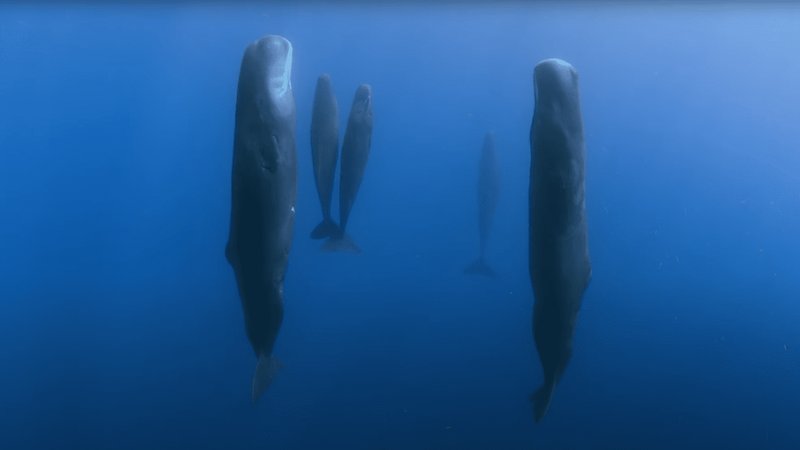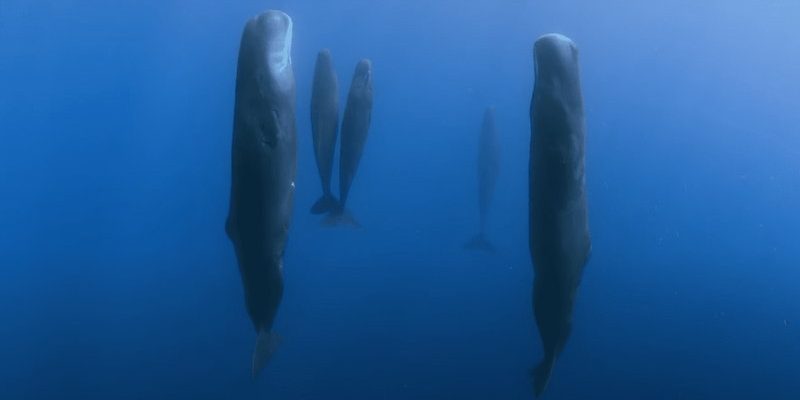
In recent years, scientists and conservationists have raised red flags about the status of sperm whales and the challenges they face. Picture this: a giant ship cruising along, and suddenly, an enormous shadow looms beneath the surface. Is it a whale? Yes! But with the growing threats from human activities, these gentle giants need our voices now more than ever. Let’s dive deeper into their world, explore their current conservation status, and see how you can help.
Understanding Sperm Whales
Sperm whales are not just the largest toothed whales but also possess unique characteristics that set them apart. They can reach lengths of up to 20.5 meters (67 feet), and their heads can account for about one-third of their body length. It’s mind-boggling to think of such size! These whales are famous for their deep diving behavior; they can hold their breath for up to 90 minutes, plunging over 3,000 meters (around 10,000 feet) to hunt their primary prey: squid.
The social structure of sperm whales is fascinating too. They typically live in matriarchal groups, meaning that older females lead the pods. This dynamic offers strong bonds and support among family members. If you’ve ever watched a documentary featuring these intelligent creatures, you’ve probably seen how they communicate through clicks and whistles, creating a complex “language” that helps them navigate the ocean and bond with one another.
Current Conservation Status
So, when it comes to conservation status, where do sperm whales stand? As of now, sperm whales are classified as “vulnerable” by the IUCN Red List. This means they face a high risk of extinction in the wild. The estimated global population ranges from 300,000 to 450,000 individuals, but that number is far from secure.
Despite being listed as vulnerable, it’s important to remember that sperm whales have made some recovery since the days of relentless whaling. In the 19th and early 20th centuries, they were hunted to near extinction for their oil. Thankfully, international regulations and a ban on commercial whaling have allowed their numbers to rebound somewhat. However, challenges still loom large on the horizon.
Key Threats to Sperm Whales
You might be wondering what’s still putting these magnificent creatures at risk. Let’s explore the key threats that are haunting sperm whales today:
- Climate Change: Changes in ocean temperatures affect the availability of prey, making it harder for sperm whales to find food.
- Ship Strikes: Collisions with large vessels are a significant risk, especially as shipping lanes expand.
- Noise Pollution: Sonar and industrial activities disrupt their communication and navigation.
- Plastic Pollution: Ingesting plastic can lead to serious health issues for these whales.
It’s shocking to think that something as simple as plastic in the ocean can play a part in endangered species. These threats aren’t just statistics; they represent real dangers that might affect a whale you glimpse on a boat tour or in a documentary.
Conservation Efforts in Place
Fortunately, conservationists and governments are working diligently to protect sperm whales and their habitats. Many organizations have implemented several initiatives to help these creatures thrive once more. Here’s how efforts are being made:
- Marine Protected Areas: Creating safe zones where human activities are restricted helps sperm whales thrive.
- Legislation: Responsible fishing and shipping regulations help mitigate risks of collision and overfishing.
- Research Initiatives: Ongoing studies aim to understand their behavior and migration patterns to inform effective conservation strategies.
The collective effort from scientists, nonprofits, and communities has brought hope to the future of sperm whales. However, it’s crucial that these programs continue and expand.
How You Can Help Protect Sperm Whales
Now that you know the challenges sperm whales face, you might be thinking, “What can I do to make a difference?” Here are some simple yet impactful actions you can take:
- Reduce Plastic Use: Every little effort helps. Bring reusable bags, bottles, and straws to decrease ocean pollution.
- Support Sustainable Seafood: Choose seafood that is caught responsibly to help preserve marine ecosystems.
- Educate Others: Share what you’ve learned! Raising awareness within your community can spark change.
Your actions, no matter how small, can ripple through the community and lead to positive impacts. Whether it’s participating in local clean-up events or simply starting conversations about ocean conservation, each step counts!
The Future of Sperm Whales
Looking ahead, the future of sperm whales hangs in the balance. With the ongoing conservation initiatives and increased awareness, there’s hope. The more we understand about these incredible creatures, the better we can safeguard their future. The ocean is their home, and by protecting it, we protect them too.
It’s essential that we keep pushing for policies that protect their habitat and raise awareness about the threats they face. In this interconnected world, the well-being of sperm whales reflects the health of our oceans.
In conclusion, sperm whales are truly fascinating creatures that play a vital role in marine ecosystems. While they are currently classified as vulnerable, there’s still much we can do to support their conservation. Remember, every effort counts, and your actions can help create a ripple effect for positive change.
Let’s work together to ensure these magnificent animals continue to grace our oceans for generations to come. After all, they deserve to thrive in the deep blue, just as much as we enjoy learning about them. So next time you think of sperm whales, remember the challenges they face and the role you can play to help protect them. Together, we can make a difference!

